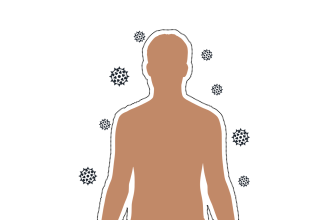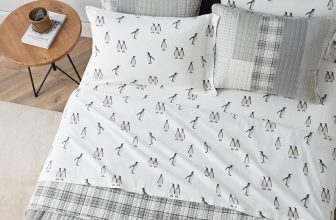sleephall.com is a participant in the Amazon Services LLC Associates Program, an affiliate advertising program designed to provide a means for sites to earn advertising fees by advertising and linking to Amazon.com so we may earn a commission when you use the links on this page to buy products , thanks.
Bedding refers to the materials that are used to cover a mattress and provide a comfortable sleeping surface. These materials can include sheets, comforters, duvets, bedspreads, and blankets. The right bedding can make all the difference in getting a good night’s sleep, as it can provide warmth, comfort, and a soft, inviting surface to rest on. Bedding is a crucial part of creating a comfortable and restful sleep environment. From sheets and comforters to pillows and blankets, the choices you make in bedding can have a big impact on the quality of your sleep. In this article, we will take a closer look at the different types of bedding available and the factors to consider when making your selections.
One of the most important things to consider when choosing bedding is the type of fabric it is made from. The most common fabrics used in bedding are cotton, linen, and polyester. Cotton is a popular choice because it is soft, breathable, and easy to care for. Linen is also a popular choice because it is durable, cool, and naturally hypoallergenic. Polyester is often used for its durability, wrinkle-resistance, and affordability. Sheets are the foundation of any bedding ensemble. They come in a variety of materials, including cotton, linen, and microfiber. Cotton is a popular choice because it is soft, breathable, and easy to care for. Linen is also a popular choice because it is durable and has a unique texture that can add visual interest to a room. Microfiber sheets are a budget-friendly option that are also soft and easy to care for.

How to choose bedsheets?
When choosing sheets, it is important to consider the type of weave as well. The two most common types of weave are percale and sateen. Percale sheets have a crisp, matte finish and are cool and breathable, making them a good choice for hot sleepers. Sateen sheets have a smooth, satiny finish and are warmer, making them a better choice for cold sleepers. Another important consideration when choosing bedding is thread count. Thread count refers to the number of threads woven into one square inch of fabric. A higher thread count typically means a softer, more luxurious feel to the fabric. However, it’s important to note that thread count is not the only indicator of quality, and a high thread count doesn’t always mean a better product. When choosing sheets, consider the thread count. Thread count refers to the number of threads woven into one square inch of fabric. Generally, the higher the thread count, the softer and more durable the sheets will be. A thread count of 200-400 is considered good quality, but some high-end sheets can have a thread count of 600 or more.
Another important consideration when choosing sheets is the fit. Sheets come in a variety of sizes to fit different mattress sizes. It is important to choose sheets that fit your mattress snugly to ensure they stay in place and provide maximum comfort.

How to choose comforters?
Comforters and duvets are another important component of a bedding ensemble. They provide warmth and insulation, and can be used as a decorative element in a room. Comforters are typically filled with synthetic materials, such as polyester or down alternative, while duvets are typically filled with down or feathers.Comforters and duvets are similar in that they are both filled with a soft, insulating material. Comforters are typically made from a fabric cover and a synthetic or down fill, while duvets are typically made from a removable cover and a down or synthetic fill. Duvets are more versatile than comforters, as the cover can be easily removed and washed, while the fill can be replaced as needed. When choosing a comforter or duvet, consider the fill power. This refers to the quality of the down or feathers used to fill the comforter or duvet. A higher fill power indicates a higher quality, and therefore, a warmer and more durable comforter or duvet. Another factor to consider when choosing a comforter or duvet is the material of the cover. A cotton cover will be soft and breathable, while a silk or satin cover will add a luxurious touch to your bedding ensemble.

How to choose pillows?
Pillows are another important component of a bedding ensemble. They provide support for your head and neck, and can be used to adjust the height of your head and shoulders. Pillows come in a variety of materials, including down, feathers, memory foam, and synthetic fibers.
When choosing a pillow, consider your sleeping position. If you sleep on your back, a medium-firm pillow will provide the support you need. If you sleep on your side, a firm pillow will provide the support you need to keep your neck and spine aligned. If you sleep on your stomach, a soft pillow will provide the least amount of resistance.
Bedspreads and blankets are also popular choices for bedding, and they come in a wide variety of styles and materials. Bedspreads are typically used as a decorative layer over the top of the bed, while blankets are used for warmth. Some popular materials for bedspreads and blankets include cotton, wool, and fleece.

How to choose blankets?
Blankets are another important component of a bedding ensemble. They provide warmth and insulation, and can be used as a decorative element in a room. Blankets come in a variety of materials, including cotton, wool, and synthetic fibers. When choosing a blanket, consider the weight. A lightweight blanket is good for warm weather, while a heavy blanket is good for cold weather. Also, consider the material of the blanket, as some materials, such as wool and cashmere, are naturally warm and insulating, while others, such as cotton, are more breathable.
When it comes to caring for your bedding, it is important to follow the manufacturer’s care instructions. Most bedding can be machine washed and tumble dried on low heat, but some items may need to be dry cleaned or hand washed. It is also important to use a mild detergent and avoid using fabric softener, as this can damage the fibers and reduce the effectiveness of the bedding.

In conclusion, bedding is an essential part of a good night’s sleep. It provides warmth, comfort, and a soft, inviting surface to rest on. When choosing bedding, it is important to consider the type of fabric, thread count, weave, and care instructions. With the right bedding, you can enjoy a more comfortable and restful sleep.
For better visibility for all the offers available please turn off your ad blocker







